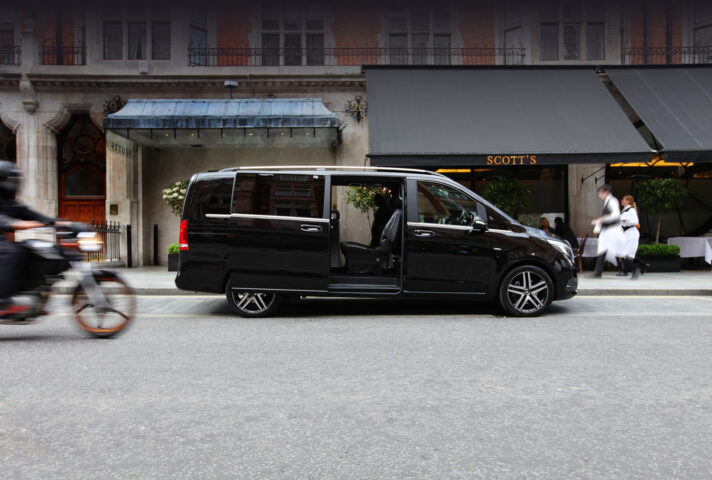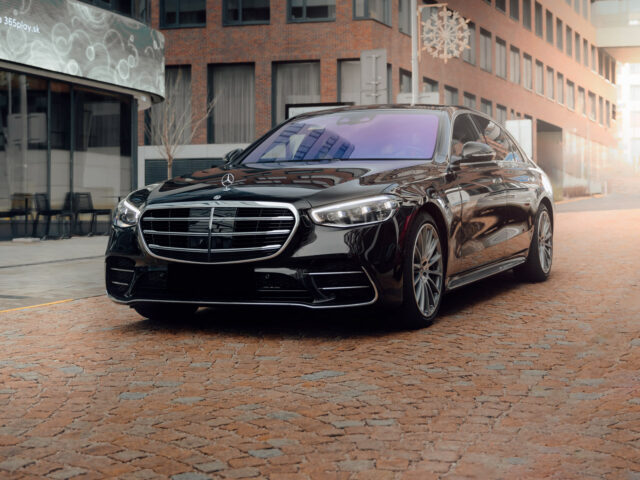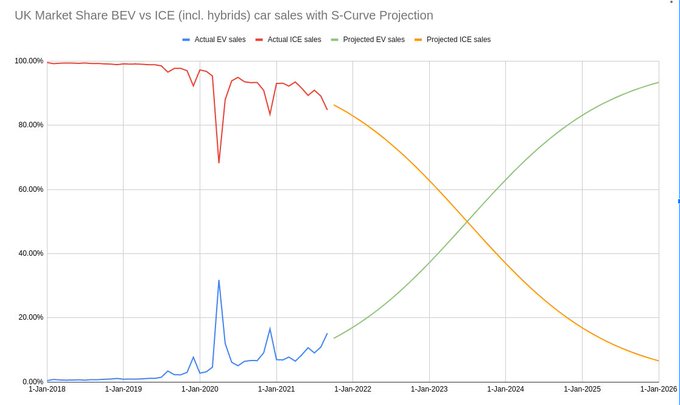The Electric Dream
The journey to super luxury electric vehicles (EV)
The hum of luxury electric taxis was first heard on the streets of London in 1897. Three years after the development of the world’s first production car. The first Porsche was electric, as was the grandfather of the Range Rover. While Mercedes premiered their first electric vehicle (EV) in 1906. This week, Rolls-Royce announced their first EV, the super luxury electric Spectre. 121 years after Charles Roll’s prophetic electric dream.
We are going on a journey to discover that many motoring pioneers had a passion for cycling. And how this fervour created the smooth roads that eventually paved the way for electric vehicles. Journey with us back through the past and to the future of luxury sustainable electric travel.
The Electric Rolls-Royce
121 Years in the making
This week Rolls-Royce Motor Cars introduced their first fully electric car. They announced that on-road testing of their initial super-luxury EV was imminent.
The use of electric motors is not a new concept for Rolls-Royce. Sir Henry Royce was fascinated by all things electrified, and his first venture, created dynamos, electric crane motors and patented the bayonet-style light bulb fitting.
In April 1900 the marque’s co-founder Charles Rolls prophesied an electrified automobile. His experience of an early electric motor car named the Columbia inspired Charles Rolls.
Claude Johnson was the self-styled ‘Hyphen in Rolls-Royce’. He described Rolls-Royce as ‘a petrol car as smooth and quiet as an electric’. And to complete the symmetry, Paris Singer became the world’s first owner of a Rolls-Royce motor car.
“The electric car is perfectly noiseless and clean. There is no smell or vibration, and they should become very useful when fixed charging stations can be arranged. But for now, I do not anticipate that they will be very serviceable – at least for many years to come.”
Electric Rolls-Royce Video
An Introduction to the Spectre
Torsten Müller-Ötvös, the CEO of Rolls-Royce Motor Cars introduces the electric future and history of Rolls-Royce.
Introducing the Rolls-Royce Spectre
Ethereal. Ecstatic. Electric.
The new electric Rolls-Royce has a new name: Spectre. A name that fits in with their ethereal named super-luxury vehicles, such as the Phantom and Ghost, and the Spirit of Ecstasy.
“This name perfectly matches the extraordinary Rolls-Royce that we are announcing today – a motor car that makes its presence felt before disappearing into a world inaccessible to all but the very few. As a quintessentially British brand, we have selected the British spelling, however the meaning is universal.
For fans of Ian Fleming, SPECTRE is the insidiously evil organisation led by Ernst Stavro Blofeld. SPECTRE (an acronym for Special Executive for Counter-intelligence, Terrorism, Revenge and Extortion) is fortunately a fictional bad-boy outfit, first introduced in 1961’s Thunderball. The film featured the now iconic Silver Birch DB5 from Aston Martin.
We doubt if the Rolls-Royce Spectre will be fitted with revolving number plates or a passenger ejector seat. Though you could ask Goodwood’s Bespoke Coachbuild department if these are possible. They have done some customisations over the years which would make even 007’s Q envious.
“Spectre is a name given to otherworldly beings synonymous with great power and apparition; creatures of an alternative realm that make their presence felt through fleeting manifestation. A spectre forces the world to pause. It dominates the space it occupies. Then, as quickly as it appears, it dissipates, leaving a wake of exhilaration, energy, and intrigue.”
Beware silent cars
The Whisper of Rolls-Royce
Long before the government mandated that manufacturers install an acoustic sound system in quiet electric cars. Rolls-Royce famously hung notices around their factory bearing the legend: ‘Beware silent cars.’
Whispers of Rolls-Royce modifications would probably not have met with Henry Royce’s approval. Even the “Spirit of Ecstasy“, originally called “The Whisper”, the audacious leaning aura, failed to impress Royce.
Royce was ill during the commissioning of the flying lady. He did not believe the figurine enhanced the cars, asserting that it impaired the driver’s view, and was rarely seen driving one of his company’s vehicles adorned with the mascot.
Strive for perfection in everything you do
The legend of Henry Royce
The iconic Rolls-Royce radiator mascot didn’t please the great engineer who died in 1933. But his ethereal presence lives on to this day in the cars which bear his name.
In 1949 an Italian owner, seeking permission to modify his Rolls-Royce, commissioned a seance to call up Henry Royce’s spirit. Rolls-Royce legend has it that the advice from beyond the veil was: “Consult your authorised distributor”.
A Rolls-Royce does not break down. It ‘fails to proceed.’ We know from experience of providing Rolls-Royce Phantom for chauffeur hire and weddings, they are very reliable motor cars. We have never known one to ‘fail to proceed’. The only issues we have had are punctures. Which is why we have every confidence that the Rolls-Royce Spectre will be a great success. When the finished electric limousine glides silently off the Goodwood production line in late 2023 it will be perfect. Global testing will have covered 2.5 million kilometres, a simulation of 400 years of use. This super-luxury EV will be sublime.
“This fundamental change in our powertrain technology requires that we challenge every single aspect of the product before we offer it to the most discerning and demanding individuals in the world – our Rolls-Royce clients.
To do this, we have conceived the most demanding testing programme in Rolls-Royce’s history. We will cover 2.5 million kilometres – a simulation of more than 400 years of use for a Rolls-Royce, on average – and we will travel to all four corners of the world to push this new motor car to the limit.”
Roads were not built for cars
The rise of the cycling pioneers
Midway through the most inventive time in human history, the miraculous 1880s the safety bicycle would hit the rough roads. In fact, roads were not built for cars. It was the bicycle that we have to thank for our smooth roads. And the early cycling and later motoring pioneers.
Many of the early automotive pioneers, were cycling pioneers too. People like Charles Rolls, Karl Benz, John Kemp Starley (Rover) and Ferdinand Porsche – who invented the first electric bicycle in 1893.
Londoner, John Kemp Starley created the modern bicycle in Coventry in 1885. He also made a pioneering electric car and today the company he founded makes the hybrid Range Rover Autobiography. Described as the man who “set the fashion to the world”.
His second Rover, a bicycle with nearly equalised wheels and direct steer forks was introduced in a bicycle show in London in 1885. The Rover was looked down on by the penny farthing riders, until, and still on solid tyres when it broke all time trial records.
The First Electric Cars
From Parker, to Mercedes, to Rover electric vehicles
In 1885, at the same time that the safety bicycle was introduced, Mercedes-Benz co-founder Karl Benz introduced the world’s first production automobile with a four-stroke internal combustion engine.
Benz passion was to design a horseless carriage. Based on his experience with, and fondness for, bicycles, he used similar technology when he created the automobile, the Benz Patent-Motorwagen.
French physicist Gaston Plane invented commercial, rechargeable lead-acid batteries in 1859. It took an Englishman – Thomas Parker – to combine the two in a carriage to create the first production electric car, built in London in 1884.
In 1888, J.K. Starley built one of the first electric cars. Publicised by “The Autocar” in 1903 when they said the vehicle was “we believe, the first motor machine made in Coventry”.
Starley’s experiments with an electrically driven battery-powered tricycle were not as successful as his Rover bicycle. The batteries were placed in a wicker basket above and behind the rear axle with the electric motor fitted underneath. The range was poor, and once the batteries had gone flat, the dead weight of the machine made it practically unmovable.
English inventor Thomas Parker, who was responsible for innovations such as electrifying the London Underground, built the World’s first production electric car in Wolverhampton in 1884.
Of course, there are losers will all major innovations, as another cycle and electric car pioneer, American Colonel Albert Augustus Pope said in 1895:
“between electric cars in the cities and the bicycle in the country, the value of horseflesh will drop to almost nothing within twenty years.”
Our Electric Chauffeur Vehicles
Full Electric and Hybrid chauffeur-driven cars and people carriers
We are looking forward to offering electric super-luxury vehicles to our electric and hybrid chauffeur cars. We currently have the fully electric Mercedes EQV, the luxury V-Class EV people carrier. Plus sleek Mercedes S-Class and Range Rover hybrid chauffeur cars.
iChauffeur were hybrid pioneers back in 2007 when we brought luxury hybrid chauffeur cars to the streets of London. We took part in the inaugural Brighton to London Eco Rally too. But we weren’t the first to offer luxury electric taxis to London.
1897 - A most splendid year
From bicycles to the Royal Automobile Club
1897 was an especially good year for automotive pioneers. The Royal Automobile Club was founded as the Automobile Club of Great Britain at a time when ‘horseless carriages’ were regarded with scepticism and suspicion. Their clubhouse is still in Pall Mall, St James’s. In 1897, The Hon. Charles Rolls, aristocrat, playboy and daredevil received his first road speed induced adrenaline rush. He rode the fastest vehicle of the day, the bicycle. The co-founder of Rolls-Royce was a keen bicycle racer, captaining the Cambridge University cycling team. At the same time, Aston Martin co-founder Lionel Martin raced bicycles for Oxford University.
And in the same year, 1897, the Bersey Electric Cab (also known as the London Electrical Cab) became the first electric taxi cab in London.
The London Electric Cab, 1897
London's first electric taxi cab - The Hummingbird
Developed by Walter Bersey the vehicles could carry two passengers and had a top speed of 12 mph. Initially 12 cabs began on 19 August 1897 and a total of 77 were built, with a maximum of 75 in service at once.
Bersey said “there is no smell, no noise, no heat, no vibration, no possible danger, and it has been found that vehicles built on this company’s system do not frighten passing horses”.
Passengers reported that the interior fittings were luxurious when compared to horse-drawn cabs. The electric cabs were coach built by Mulliner , who years later would be known for their work with Rolls-Royce and Bentley.
The electrical taxis were nicknamed “hummingbirds” for both the sound they made and their distinctive livery. The vehicles suffered badly from wear in service owing to their heavy weight. This damaged the batteries and tyres, which were expensive to replace, made their operation unprofitable.
Did you know: In 1971, the electric Lunar Roving Vehicle was the first car driven on the moon?
Porsche and Ford go electric
Designing the world's first hybrid car
The first vehicles that Ferdinand Porsche designed were electric. The electric powertrain is embedded deep in the Porsche DNA. In 1898, the founder of Porsche designed the Egger-Lohner C.2 Phaeton which was powered by an electric motor. Later that year, Porsche joined the carriage maker in Vienna, k.u.k. Hofwagenfabrik Ludwig Lohner & Co.
Lohner’s reason for an electric vehicle rings true today, the air was “ruthlessly spoiled by the large number of petrol engines in use”.
in 1900, Porsche designed the world’s first functional hybrid car, the “Semper Vivus” (Latin for “always alive”).
Electric mobility has failed over the decades: despite its modest power output, the car weighed almost two tonnes.
On 12 January 1882, three years after the invention of the carbon-filament incandescent light bulb. Thomas A. Edison’s Edison Electric Light Company fired up the World’s first electrical power station at 57 Holburn Viaduct, central London. It was named the Edison Electric Light Station. It burnt coal to drive a steam turbine which drove a 27-tonne, 125 horsepower (93 kW) generator which produced direct current (DC) at 110 volts.
Having run at a significant loss the station closed in September 1886.
The first electric and hybrid Mercedes
Electric cars were particularly appealing to women
In 1906 the first Mercedes electric and hybrid cars appeared. Daimler-Motoren-Commanditgesellschaft in Austria launched its first series-produced electric cars: the battery-powered Mercédès Electrique and the Mercédès Mixte with hybrid drive.
As early as 1903, Henry Ford was aware that his friend Thomas A. Edison was experimenting with battery technology for vehicles. But it wasn’t until 1914 that Ford began openly working on a low-cost electric car. The goal was to sell the ‘Edison-Ford’ for as low as $500, only slightly more than a Model T at $440.
During this era, electric cars were particularly appealing to women. Unlike ICE cars that started with a hand-crank, electric vehicles didn’t take a lot of muscle to operate. EVs were reliable, and they didn’t produce foul-smelling emissions. Henry Ford’s wife. Clara, was an early EV advocate, and drove a Detroit Electric.
Did you know: Electrified versions of the BMW 1602, boasting 43bhp Bosch motors and regenerative braking, starred at the 1972 Munich Olympics as marathon support vehicles?
“Within a year, I hope, we shall begin the manufacture of an electric automobile,” “The problem so far has been to build a storage battery of light weight which would operate for long distances without recharging.”
The EV revolution
Seeing Ahead for the Electric Vehicle
By May 1914, Mr. Ford said, “It’s coming.” And he was proclaiming an EV revolution in the works. “The electric automobile will be the family carriage of the future.”
Edison illuminated on one of the major problems with early electric vehicles – the charging infrastructure. In an article called ‘Seeing Ahead for the Electric Vehicle’ published in February 1917, he said:
“The growth of the electric vehicle has been hindered by lack of charging facilities.”
Possibly the biggest nail in the early electric automobile coffin was the electric self-starter. When internal-combustion cars started replacing hand-cranks with electric-starter devices, EVs were robbed of a key selling point: ease of use.
The combination of the electric starter, poor range, higher cost, lack of charging infrastructure, and of course cheap petrol wiped out electric cars for nearly 100 years.
There are five big reasons why commercial electric cars were replaced by petrol powered cars: the lack of infrastructure, heavy weight, poor range, higher production costs and the introduction of the electric starter motor.
Gasoline-powered vehicles could travel farther than their electric counterparts. They were lighter because they didn’t need the heavy batteries.
“The growth of the electric vehicle has been hindered by lack of charging facilities. Even the big men don’t seem to realize the opportunity for increasing their sales to the public by establishing charging stations, and by making a profit on selling electric mileage to the community. There is an opportunity for big sales of current on a profitable service basis. Business needs imagination. The electrical business is no exception. Sometimes I think the men who ought to see ten years ahead see only next week.”
The Lithium-ion Battery
Lighter and more powerful
Clinton Edgar Woods was an electrical and mechanical engineer, inventor, manufacturer of automobiles in Chicago and New York City. In 1900 he authored one of the first books on electric vehicles, “The Electric Automobile: Its Construction, Care. and Operation.”
Woods thoughts on the limitations of early battery technology are interesting:
Manufacturers of electric automobiles are often asked the question: “Will not a battery sometime be made to run a vehicle one hundred or more miles on one charge?” While this may be possible, the writer hardly thinks it will ever be probable, and his experience with the public is that it is wholly unnecessary, speaking generally and from a practical point of view. Improvements now being made in batteries, in the attempt to make them stand more rapid charges and discharges are much more important than one which will give them a larger mile-age capacity.
With the development of lighter and more powerful lithium-ion batteries and the drive towards less pollutant and carbon dioxide emissions, the focus has turned once more to electric drive systems.
Analyses of full life cycle emissions shows that from production to grave, the average electric car in Europe, emits three times less CO2 than its fossil-fuelled equivalents.
In the worst case scenario, an electric car with a battery produced in China and driven in Poland still emits 22% less CO2 than diesel and 28% less than petrol. And in the best case scenario, an electric car with a battery produced in Sweden and driven in Sweden can emit 80% less CO2 than diesel and 81% less than petrol.
“The Arthur D. Little management consultancy estimates that—based on a vehicle life of 20 years—the manufacture of an EV creates three times as much toxicity as that of a conventional vehicle. This is mostly due to the greater use of heavy metals. Similarly, a detailed comparative life-cycle analysis, published in the Journal of Industrial Ecology, found the production of EVs to involve substantially higher toxicity, both to human beings and to freshwater ecosystems.”
— Vaclav Smil, Numbers Don’t Lie
EV production is more toxic, but it appears the overall benefits outweigh the negatives. And with clean electrical energy power, there will be great reductions to air pollution.
EV will replace Internal Combustion Engine (ICE) cars. The question is when. Norway is set to hit 100 per cent electric vehicle sales early next year.
What is EV, BEV, HEV, PHEV?
A guide to types of electric cars
There are several main types of electric cars: The standard electric vehicle (EV), also known as a battery-powered electric vehicle (BEV); the hybrid electric vehicle (HEV); and the plug-in hybrid electric vehicle (PHEV).
EV & BEV
EVs don’t have internal combustion engines. Instead of petrol/diesel, these vehicles run solely on battery power. Drivers can charge them at home using Level 1 or Level 2 EV chargers or use more powerful chargers (Level 3) designed for commercial charging stations.
HEV
HEVs run on both an internal combustion engine (ICE) and an electric motor that uses energy stored in a battery. HEVs charge their batteries via regenerative braking.
Current Formula 1 cars have hybrid power units.
PHEV
PHEVs build on the concept of the HEV. They have an ICE and a battery-powered electric motor. This allows the battery to store enough power to feed the electric motor
The future of Electric Vehicles
EVs could Be The majority of car sales as soon as 2023
Disruptive technologies like electric vehicles might in reality have had a long gestation period. In this case over 120 years. But change, momentum, inertia and sustainability are driving the future towards electric cars.
In Norway nearly 80% of new car sales are now electric.
Since around the middle of 2019, the trickle of electric car sales in the UK has started to accelerate. Robert Osfield on Twitter has extrapolated the “S curve” of sales in the UK. The trend suggests in less than 2 years half of all cars sold in UK will be Battery Electric.
By the end of 2023, the first BEV Rolls-Royce, the Spectre will glide silently off the Goodwood ‘Production Line’. Charles Rolls prophecy will finally be realised. Welcome to the future of super-luxury electric travel.
Your Sustainable Travel Partner
The Allure of Luxurious Electric Chauffeur Hire
Embrace both luxury and sustainability with the allure of luxurious electric chauffeur hire. Choose from our fully electric luxury people carrier, the Mercedes EQV, or the hybrid-electric Mercedes S-Class and the long-wheelbase Range Rover Autobiography.
Since 2007 we have led the way with our luxury hybrid chauffeur cars. Our vision is for a fully electric chauffeur car fleet.
How can we help you with your sustainable travel requirements?











